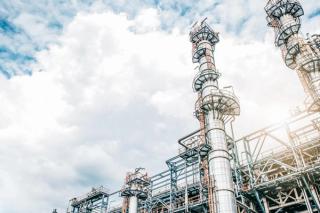
Report: The business case for global health equity - The investor view
by Alexia Koch, Rupali Patni, Stéphanie Finet
View post

Julian’s article below explains the regulations operators of COMAH sites must comply with in the UK to reduce hazards, the balance between risk and cost, and the elements that need to be considered for good practice compliance.
Regulatory framework
UK planning authorities will seek to reduce hazards at source through the Planning (Hazardous Substances) Regulations 2015, the Town and Country Planning (Hazardous Substances) (Scotland) Regulations 2015 and the Planning (Hazardous Substances) (Wales) Regulations 2015.
Sites intending to hold quantities of hazardous substances above defined limits must first obtain planning consent, which is an important step in the overall control of major accident hazards under the Control of Major Accident Hazards (COMAH) Regulations.
The COMAH Regulations place a general duty on operators to take all measures necessary to prevent major accidents and limit their consequences to people and the environment. The Regulations recognise that risks cannot be eliminated and so prevention should be based on the principle of reducing risk to a level that is as low as reasonably practicable (ALARP) for human risks and use of best available techniques (BAT) for environmental risks.
Compliance with the regulations requires organisations to:
Essentially, compliance with risk-based process safety legislation requires application of management systems for the identification, understanding, and control of process hazards to prevent process-related injuries and incidents.
Interestingly, during 2004/05, 68% of loss of containment events reported under RIDDOR occurred on COMAH sites (Ref. [1]) and across all incidents the three most common risk control systems to fail related to operating procedures (37%), plant design (32%) and hazard analysis (26%). Inadequate maintenance also played a significant part, followed by management of change.
COMAH Competent Authority policy on containment
Major incidents over the years have highlighted deficiencies in the way hazardous liquids are stored at many sites and the harm such incidents can cause to the environment, people, and property.
In response, the COMAH Competent Authority developed a containment policy to set out the key principles relating to bulk storage of hazardous liquids. The policy, Containment of Bulk Hazardous Liquids at COMAH Establishments, describes measures to improve the protection of people and the environment, both on and off site. It calls for increased standards in design, inspection, testing and maintenance of:
The policy recognises that secondary and tertiary containment systems provide an essential means for mitigating the potential consequences of failure of primary storage facilities and/or the combustion of their contents.
Primary containment
Primary containment is the most important means of preventing major accidents involving hazardous substances. Systems include equipment in direct contact with the substances being stored (the inventory) such as tanks, vessels, pipework, valves, and pumps. This also includes equipment that prevents the loss of primary containment under abnormal conditions, such as high-level or high-pressure alarms linked to shutdown systems, relief systems, and the associated management and control systems.
Design reviews and justifications for the measures in place should consider:
Secondary and tertiary containment
On first reading the Competent Authority’s policy on containment, duty holders may feel concerned at the potential cost implications for improvement. As an example, ensuring existing tank bunds, including the floors under tanks, are impervious to the liquids stored could prove expensive. However, the term ‘reasonably practicable’ is key here because this is the term used in the legislation to help strike a balance based on risk and cost. It relates to the gross disproportion of the costs and the risk reduction achieved.
Assessment of the effectiveness of secondary and tertiary measures should consider:
Inspection, testing and preventive maintenance
Over its operating life, plant, equipment and structures may exhibit signs of ageing, which can compromise safety and reliability. Knowing what, when, where and how they should be inspected and maintained is therefore essential for maintaining safe and compliant operations.
Compliance with good practice requires:
Visit our Safety Advisory page to learn more about our services and how we can support you.
Further guidance
Reference [1] provides useful information on the underlying causes of loss of containment events and some key lessons learnt in the chemical industries.
Reference [2] provides good practice guidance on the design and construction of secondary and tertiary containment systems, and on inspection, maintenance and modification of existing installations.
With over 30 technical services incorporating engineers of all disciplines, supported by risk assessment experts and other specialists, we can provide guidance and support in relation to compliance with legislation, codes, standards and guidance. We can also assist with design, inspection, testing, maintenance and modification of containment systems.

by Alexia Koch, Rupali Patni, Stéphanie Finet

